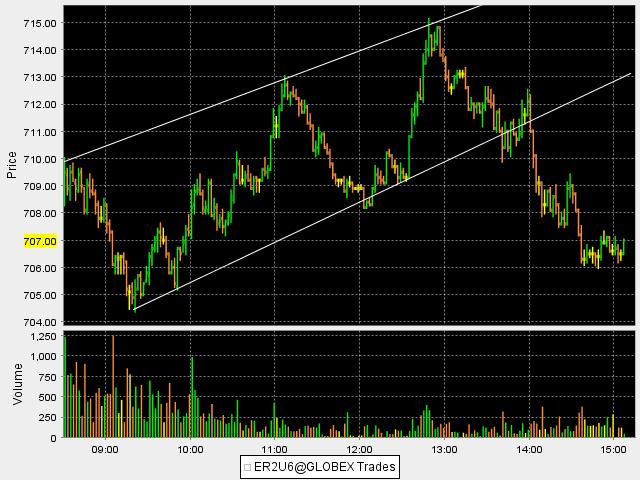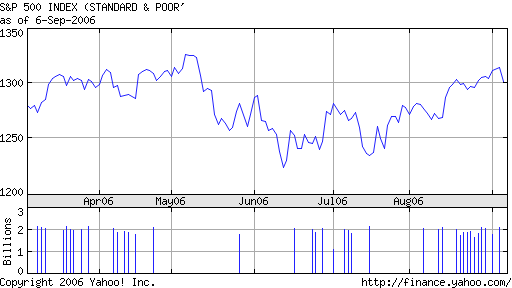Link: http://i-riches.blogspot.com/
INTRODUCTION
Having been trading stocks and options in the capital markets professionally over the years, I have seen many ups and downs.
I have seen paupers become millionaires overnight…
And
I have seen millionaires become paupers overnight…
One story told to me by my mentor is still etched in my mind:
“Once, there were two Wall Street stock market multi-millionaires. Both were extremely successful and decided to share their insights with others by selling their stock market forecasts in newsletters. Each charged US$10,000 for their opinions. One trader was so curious to know their views that he spent all of his $20,000 savings to buy both their opinions. His friends were naturally excited about what the two masters had to say about the stock market’s direction. When they asked their friend, he was fuming mad. Confused, they asked their friend about his anger. He said, ‘One said BULLISH and the other said BEARISH!’”
The point of this illustration is that it was the trader who was wrong. In today’s stock and option market, people can have different opinions of future market direction and still profit. The differences lay in the stock picking or options strategy and in the mental attitude and discipline one uses in implementing that strategy.
I share here the basic stock and option trading principles I follow. By holding these principles firmly in your mind, they will guide you consistently to profitability. These principles will help you decrease your risk and allow you to assess both what you are doing right and what you may be doing wrong.
You may have read ideas similar to these before. I and others use them because they work. And if you memorize and reflect on these principles, your mind can use them to guide you in your stock and options trading.
PRINCIPLE 1
SIMPLICITY IS MASTERY
When you feel that the stock and options trading method that you are following is too complex even for simple understanding, it is probably not the best.
In all aspects of successful stock and options trading, the simplest approaches often emerge victorious. In the heat of a trade, it is easy for our brains to become emotionally overloaded. If we have a complex strategy, we cannot keep up with the action. Simpler is better.
PRINCIPLE 2
NOBODY IS OBJECTIVE ENOUGH
If you feel that you have absolute control over your emotions and can be objective in the heat of a stock or options trade, you are either a dangerous species or you are an inexperienced trader.
No trader can be absolutely objective, especially when market action is unusual or wildly erratic. Just like the perfect storm can still shake the nerves of the most seasoned sailors, the perfect stock market storm can still unnerve and sink a trader very quickly. Therefore, one must endeavor to automate as many critical aspects of your strategy as possible, especially your profit-taking and stop-loss points.
PRINCIPLE 3
HOLD ON TO YOUR GAINS AND CUT YOUR LOSSES
This is the most important principle.
Most stock and options traders do the opposite…
They hold on to their losses way too long and watch their equity sink and sink and sink, or they get out of their gains too soon only to see the price go up and up and up. Over time, their gains never cover their losses.
This principle takes time to master properly. Reflect upon this principle and review your past stock and options trades. If you have been undisciplined, you will see its truth.
PRINCIPLE 4
BE AFRAID TO LOSE MONEY
Are you like most beginners who can’t wait to jump right into the stock and options market with your money hoping to trade as soon as possible?
On this point, I have found that most unprincipled traders are more afraid of missing out on “the next big trade” than they are afraid of losing money! The key here is STICK TO YOUR STRATEGY! Take stock and options trades when your strategy signals to do so and avoid taking trades when the conditions are not met. Exit trades when your strategy says to do so and leave them alone when the exit conditions are not in place.
The point here is to be afraid to throw away your money because you traded needlessly and without following your stock and options strategy.
PRINCIPLE 5
YOUR NEXT TRADE COULD BE A LOSING TRADE
Do you absolutely believe that your next stock or options trade is going to be such a big winner that you break your own money management rules and put in everything you have? Do you remember what usually happens after that? It isn’t pretty, is it?
No matter how confident you may be when entering a trade, the stock and options market has a way of doing the unexpected. Therefore, always stick to your portfolio management system. Do not compound your anticipated wins because you may end up compounding your very real losses.
PRINCIPLE 6
GAUGE YOUR EMOTIONAL CAPACITY BEFORE INCREASING CAPITAL OUTLAY
You know by now how different paper trading and real stock and options trading is, don’t you?
In the very same way, after you get used to trading real money consistently, you find it extremely different when you increase your capital by ten fold, don’t you?
What, then, is the difference? The difference is in the emotional burden that comes with the possibility of losing more and more real money. This happens when you cross from paper trading to real trading and also when you increase your capital after some successes.
After a while, most traders realize their maximum capacity in both dollars and emotion. Are you comfortable trading up to a few thousand or tens of thousands or hundreds of thousands? Know your capacity before committing the funds.
PRINCIPLE 7
YOU ARE A NOVICE AT EVERY TRADE
Ever felt like an expert after a few wins and then lose a lot on the next stock or options trade?
Overconfidence and the false sense of invincibility based on past wins is a recipe for disaster. All professionals respect their next trade and go through all the proper steps of their stock or options strategy before entry. Treat every trade as the first trade you have ever made in your life. Never deviate from your stock or options strategy. Never.
PRINCIPLE 8
YOU ARE YOUR FORMULA TO SUCCESS OR FAILURE
Ever followed a successful stock or options strategy only to fail badly?
You are the one who determines whether a strategy succeeds or fails. Your personality and your discipline make or break the strategy that you use not vice versa. Like Robert Kiyosaki says, “The investor is the asset or the liability, not the investment.”
Understanding yourself first will lead to eventual success.
PRINCIPLE 9
CONSISTENCY
Have you ever changed your mind about how to implement a strategy? When you make changes day after day, you end up catching nothing but the wind.
Stock market fluctuations have more variables than can be mathematically formulated. By following a proven strategy, we are assured that someone successful has stacked the odds in our favour. When you review both winning and losing trades, determine whether the entry, management, and exit met every criteria in the strategy and whether you have followed it precisely before changing anything.
In conclusion…
I hope these simple guidelines that have led my ship out of the harshest of seas and into the best harvests of my life will guide you too. Good Luck.
(I have stacked the winning odds in your favor and removed all possible amateur pitfalls for you in the Star Trading System! Join us now at http://www.mastersoequity.com/MOE_startradingsystem.htm )
About the Author
Jason Ng is the founder of www.MastersoEquity.com a website dedicated to helping you retire young and rich and make a fortune from the stock market through option trading.
6 minutes ago





